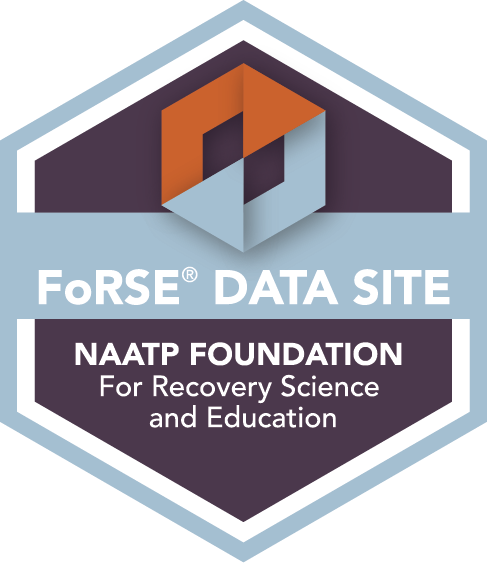At Northern Illinois Recovery Center (NIRC), we understand that mental health challenges can often overlap, making it difficult to distinguish between similar conditions. Avoidant Personality Disorder and Social Anxiety Disorder are two conditions that share similarities but have distinct differences. Our dual diagnosis program is designed to address these complexities, providing comprehensive anxiety treatment tailored to individual needs. Let’s explore the differences between avoidant personality disorder and social anxiety disorder in detail.

What is Avoidant Personality Disorder?
Avoidant Personality Disorder is a long-term mental health condition characterized by extreme sensitivity to rejection and a pervasive fear of being negatively judged by others. This fear leads to avoidance of social situations, relationships, and activities that might involve potential criticism. Unlike occasional shyness, avoidant personality disorder is deeply ingrained in a person’s personality and significantly impacts their daily life and relationships.
Signs and Symptoms of Avoidant Personality Disorder
- Intense fear of rejection or criticism
- Avoidance of social or occupational activities involving significant interpersonal contact
- Extreme sensitivity to negative feedback
- Feelings of inadequacy and low self-esteem
- Reluctance to take personal risks or try new activities for fear of embarrassment
What Does High-Functioning Avoidant Personality Disorder Look Like?
High-functioning AVPD individuals may appear socially adept on the surface but experience significant internal struggles with self-esteem, rejection, and avoidance. Features include:
- Surface-level success: They may hold jobs or maintain basic relationships but struggle deeply with vulnerability or close connections.
- Compensation through over-preparation: Fear of criticism may lead to overachievement in professional or academic settings.
- Perfectionism: They may set excessively high standards to avoid perceived inadequacy or rejection.
- Masked insecurities: They may appear confident but feel deeply inadequate or unworthy, avoiding situations where their perceived flaws might be exposed.
- Limited relationships: They may have a small circle of trusted people, often avoiding deep intimacy.

What is Social Anxiety Disorder?
Social Anxiety Disorder, also known as social phobia, is an anxiety disorder characterized by intense fear of social situations where one might be judged, embarrassed, or humiliated. While it can be severe, social anxiety is generally considered a situational or episodic condition rather than a personality trait.
Social Anxiety Disorder Signs and Symptoms
- Intense fear of specific social situations, such as public speaking or meeting new people
- Physical symptoms, such as sweating, trembling, or nausea, in social settings
- Avoidance of social situations that trigger anxiety
- Worrying excessively about upcoming social events
- Awareness that the fear is excessive or irrational (yet unable to control it)
Can Social Anxiety Turn into Avoidant Personality Disorder?
Yes, social anxiety can develop into AVPD in some cases, especially if left untreated. Factors contributing to this progression include:
- Chronicity and severity of symptoms: Long-term, untreated social anxiety can entrench patterns of avoidance.
- Personality predispositions: Individuals with certain temperaments, such as high sensitivity to criticism or rejection, may be more prone to developing AVPD.
- Impact on identity: Over time, persistent social anxiety may evolve into a more rigid and pervasive self-view of inadequacy, aligning with AVPD traits.
Key Differences Between Avoidant Personality Disorder and Social Anxiety Disorder
While avoidant personality disorder and social anxiety share similarities, their differences are crucial for accurate diagnosis and treatment. Below are key distinctions between the two conditions:
Avoidant personality disorder is a pervasive personality disorder, meaning its symptoms affect nearly all aspects of a person’s life, including personal relationships, career choices, and everyday activities. In contrast, social anxiety is typically more situational, with anxiety tied to specific social scenarios rather than an overarching pattern of avoidance.
People with social anxiety often recognize that their fears are excessive or irrational, though they still feel unable to control them. In contrast, individuals with avoidant personality disorder may view their behaviors as justified or necessary, as these patterns are deeply ingrained in their personality.
Avoidant personality disorder usually develops in early childhood or adolescence and persists into adulthood as part of a person’s enduring personality. Social anxiety may also appear in adolescence but can sometimes diminish with age or effective treatment.
Social anxiety is typically focused on specific social scenarios, such as public speaking or eating in front of others. Avoidant personality disorder’s fear is more generalized, encompassing broader concerns about relationships, social judgment, and rejection in multiple areas of life.
While both conditions involve sensitivity to criticism, people with avoidant personality disorder may exhibit extreme emotional reactions, such as withdrawal or deep shame, to even mild negative feedback. Individuals with social anxiety might also fear criticism but may not react as intensely or universally.
People with avoidant personality disorder often avoid trying new activities or taking risks due to fear of embarrassment. Those with social anxiety may still engage in new experiences if the activity does not involve a feared social context.
Avoidant personality disorder often results in an overall lack of close relationships due to an enduring fear of intimacy and rejection. In contrast, individuals with social anxiety may desire close connections but avoid social events where they fear judgment.
Can You Have Avoidant Personality Disorder and Social Anxiety Simultaneously?
Yes, an individual can meet the criteria for both conditions. Avoidant personality disorder and social anxiety often co-occur because they share a common core of fear and avoidance. However, avoidant personality disorder tends to involve more pervasive and ingrained patterns of behavior compared to the episodic nature of social anxiety. A person with both conditions may experience heightened distress and challenges in various aspects of life.

What Similarities Exist Between Avoidant Personality Disorder vs Social Anxiety?
Both avoidant personality disorder and social anxiety involve fear of social interactions and a desire to avoid situations where rejection or embarrassment might occur. People with either condition often struggle with low self-esteem and hypersensitivity to criticism. These shared traits can make it difficult to distinguish between the two disorders without a thorough psychological evaluation.
What Causes Avoidant Personality Disorder vs Social Anxiety Disorder?
Although both AVPD and SAD involve social fears and avoidance, their causes can differ in emphasis and scope:
Causes of Avoidant Personality Disorder (AVPD)
AVPD often develops from a combination of biological, psychological, and environmental factors that create a pervasive pattern of avoidance, hypersensitivity, and self-doubt.
- Emotional Neglect or Rejection: Lack of warmth, support, or validation during childhood.
- Chronic Criticism or Ridicule: Consistent experiences of being judged, belittled, or rejected by caregivers, peers, or authority figures.
- Overprotective or Overcritical Parenting: Both extremes can result in feelings of inadequacy and a fear of failure or rejection.
Trauma can play a significant role in the development of AVPD, though not all cases are trauma-related. Contributing traumatic experiences may include:
- Emotional neglect: A lack of emotional support, validation, or warmth during formative years can contribute to feelings of unworthiness and fear of rejection.
- Chronic criticism or rejection: Repeated experiences of ridicule, harsh judgment, or rejection by caregivers, peers, or authority figures can foster hypersensitivity to criticism.
- Bullying or social humiliation: Negative experiences in social settings, such as bullying, can exacerbate avoidance behaviors and fear of social interaction.
- Insecure attachment: Early attachment issues, particularly with inconsistent or overly critical caregivers, can contribute to AVPD traits.
- Abuse: Emotional, physical, or sexual abuse can lead to profound self-doubt, mistrust, and a tendency to withdraw to avoid further harm.
These factors often combine with genetic predispositions and environmental influences to shape the development of AVPD.
Causes of Social Anxiety Disorder (SAD)
SAD also arises from a mix of biological, psychological, and environmental influences but tends to focus more on specific social fears rather than a pervasive pattern of avoidance.
Early life experiences of rejection or isolation can lead to social anxiety. Isolated incidents of public embarrassment, bullying, or rejection during childhood or adolescence may also be a cause.
SAD manifests with temperamental traits such as:
- Behavioral Inhibition: A biologically-based tendency to be shy, cautious, or withdrawn in unfamiliar situations, observable as early as infancy.
- High Sensitivity to Threat: Individuals with SAD may have an enhanced ability to detect potential negative evaluations.
- Negative Thinking Patterns: Overestimating the likelihood of negative social outcomes or harsh judgments.
- Self-Focused Attention: A tendency to be hyper-aware of one’s behavior in social settings, leading to increased self-consciousness.
Parents who exhibit socially anxious behaviors may inadvertently teach children to avoid social situations. This can include:
- Avoidance Reinforcement: Avoiding social situations reduces anxiety in the short term but reinforces avoidance behaviors, creating a cycle.
- Traumatic Social Experiences: Isolated but impactful negative experiences, such as public speaking failures or peer rejection.

Treatment Options for Avoidant Personality Disorder and Social Anxiety Disorder
At Northern Illinois Recovery Center, we offer a range of treatment options for anxiety and co-occurring disorders through our dual diagnosis program. Our approach integrates evidence-based therapies and personalized care plans to address each client’s unique needs. Treatment options include:
- Cognitive Behavioral Therapy (CBT): CBT helps clients identify and challenge negative thought patterns contributing to fear and avoidance behaviors. For social anxiety, CBT often focuses on situational triggers, while for avoidant personality disorder, therapy may address deeply rooted beliefs about self-worth.
- Exposure Therapy: Exposure therapy gradually helps clients confront feared social situations in a controlled and supportive environment.
- Medication Management: Selective serotonin reuptake inhibitors (SSRIs) and other medications may be prescribed to help manage symptoms of anxiety and improve mood regulation.
- Group Therapy: Group settings provide a safe space for individuals to practice social interactions and receive support from others facing similar challenges.
- Holistic Therapies: Techniques such as mindfulness meditation, yoga, and art therapy can help reduce anxiety and promote emotional well-being.
Get Treatment in Illinois
You don’t have to experience anxiety alone—our dedicated team is here for you. If you are experiencing co-occurring anxiety and substance use disorders, it’s important to seek help. Contact us to start your recovery journey today.




